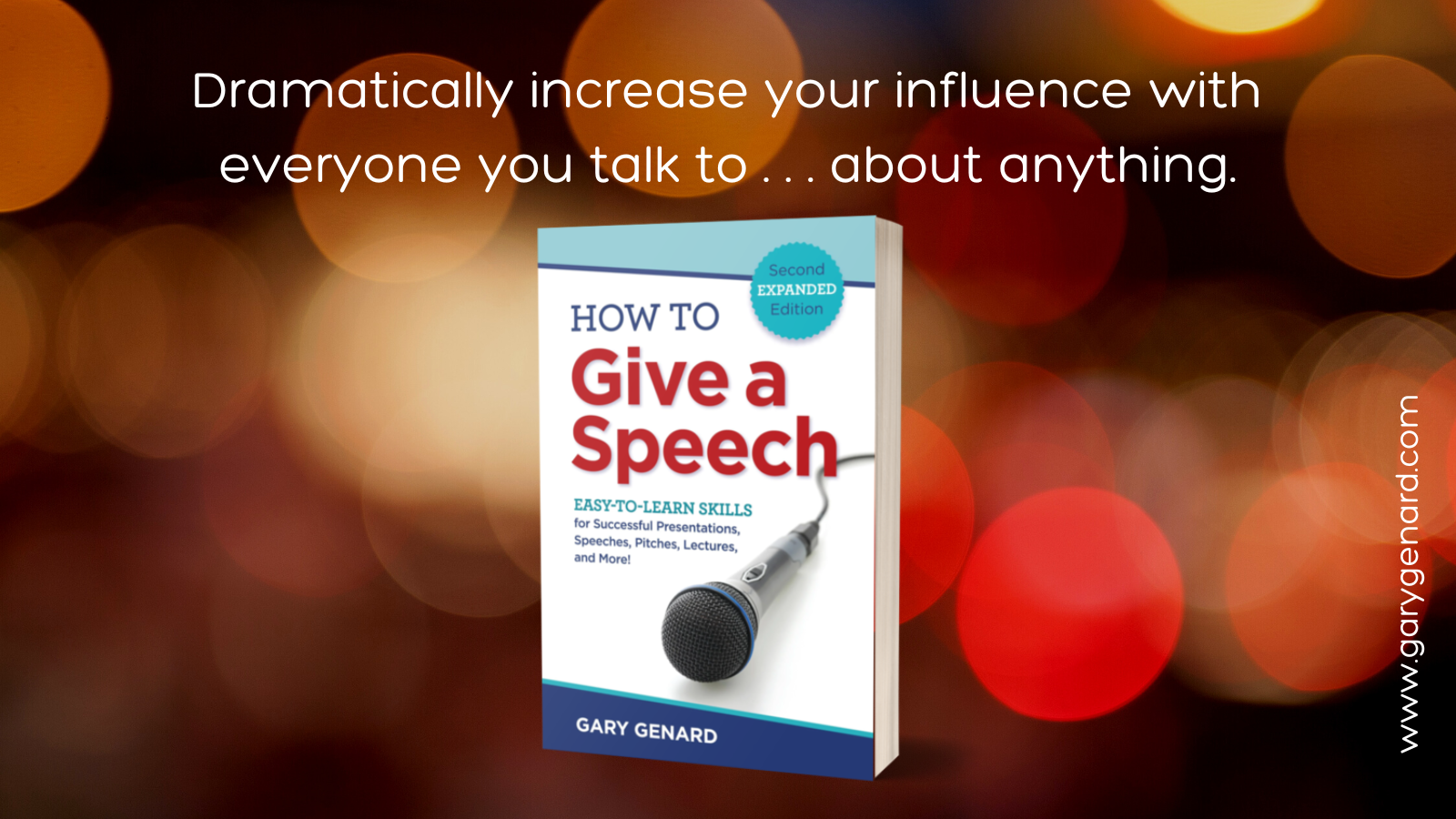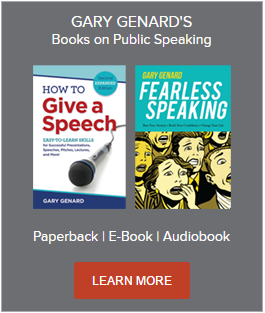Do you know the most powerful ways to move an audience? Here's how to practice a presentation for the best results.
Did you know that when it comes to an important speech or presentation, you already have content coming out of your ears? That's a metaphor I use often when helping people understand how they can be an effective—and perhaps even memorable—speaker.
It's usually necessary to take this approach because of the way most people prepare to speak. Paradoxically, they do so by spending all their time writing.
Learn all about the skills and approaches for successful speaking in The Public Speaking Handbook, How to Give a Speech. Master performance skills! You can find it here Amazon.
Speaking vs. writing: That's what I'm really talking about when I discuss how they should prepare and rehearse an upcoming talk.
In other words, I'm sharing with them how to practice a speech for the best results.
Do your messages contain the elements they need to resonate with listeners? You'll find them in my free presenter's guide, "7 Key Components of Successful Presentations."
As you've probably guessed by know, the formula for great speaking doesn't reside wholly in your material, i.e., the content. To direct all of your focus there is, truly, to misapprehend how you should be spending your time and efforts in the run-up to your appearance. So let's get on the right wavelength to understand how best to proceed when it comes to connecting with and moving audiences.
How You Can Have the Most Impact On Stage
To make something extraordinary happen in the room (or auditorium) where you're speaking, begin at the right place: with your audience and the speaking situation. And I mean literally that you should start with speaking rather than writing.
Think about how you usually prepare to speak (yes, I'm guessing). You take notes, then edit and polish them —whether you use legal pads, Word software, or a keyboard and PowerPoint. (By the way, do you know how to tell a story through a slide deck? Download my Free cheat sheet, 5 Rules for Succeeding With PowerPoint.) In other words, like everyone else, you're comfortable in the literary world schools have trained you in. But when it's time for your oral presentation, MUCH more is required of you than reading what you've written.
Influencing listeners mean more than dumping data on them. It's time to up your skills! Download my Free resource, "How To Read a Speech and Still Be An Effective Speaker."
Start Speaking (and Listening) as Early as Possible
The problem at this point—and it's a fundamental mistake we've led ourselves to—is that we probably don't sound the way we want to come across. That's because writing and speaking are two distinctly different forms of communication. They differ in their rhythms, use of language, length of utterance, necessary tone, and of particular importance, what can be absorbed in real time by the reader versus the auditor.
To boil all of this down: you can't judge how anything will sound until you hear it yourself. Try this simple experiment to hear what I mean: Choose a passage from today's newspaper, novel, or nonfiction: the form doesn't matter. Read the selection silently, "listening" in your head to the words you emphasize. Now read the same passage out loud. You should be slightly surprised at how different words need to be emphasized for the meaning to come across when you're speaking versus reading.
How good are you at setting out your ideas? Do you convey the logic and power of your message? Here's my Free guide, How to Outline a Speech for a Great Performance.
The implication is clear and profound concerning how to get a speech up and running: Once you know you'll be performing this material in public, you should start with speaking rather than writing. Marshall your ideas the same way you normally would. Then start trying different ways of talking out your ideas concerning an engaging story, phrasing, metaphors, imagery, length of sentences, etc., always keeping in mind how best to reach this audience.
When something sounds the way you want it to concerning your audience's probable response (intellectually and emotionally), then write it down. By the time you finish this process, you'll have a speech that will almost without any doubt succeed in the oral arena. And you'll save yourself rewriting time you'd otherwise need to make a literary document into an oral presentation.
Are You Warming Up for the Big Game?
Now it's time to rehearse. Don't make the enormous mistake of spending all your available time throwing together content and not getting up on your feet. This is part of the mindset that tells you that the information you'll deliver is all-important, and your platform skills and comfort up there don't matter.
The reality is, those factors are at least as important as your content. This is the oral arena, remember? The audience isn't here to absorb information in the absence of a speaker. A speaker is the reason they're here. So your ability to be comfortable, make eye contact, establish rapport, and most of all, to give a physical dimension to what you're saying through body language, is actually the essence of the public speaking situation. It's about you much more than you think.
Here are two more Free resources for you: my The Body Language Rules: 12 Ways To Be a More Powerful Speaker. And here is How To Improve Your Eye Contact. Download them now!
And here with clients I use a sports metaphor: If you were a pole vaulter or a soccer player, would you only think about the upcoming event? Or would you stretch, do your breathing and focus exercises, and otherwise get ready to perform? Likewise, getting up on your feet to move and to embody your speech should be your approach to your own big game.
You should follow me on Twitter here.

Gary Genard is an actor, author, and expert in public speaking and overcoming speaking fear. His company, The Genard Method offers live 1:1 Zoom executive coaching and corporate group training worldwide. He was named for nine consecutive years as One of the World’s Top 30 Communication Professionals, and also named as One of America's Top 5 Speech Coaches. He is the author of the Amazon Best-Sellers How to Give a Speech and Speak for Leadership: An Executive Speech Coach's Secrets for Developing Leadership Presence. His book, Fearless Speaking, was named in 2019 as "One of the 100 Best Confidence Books of All Time." " He is also the author of the Dr. William Scarlet Mysteries. Contact Gary here.
Main photo credit: Seema Miah on unsplash.




